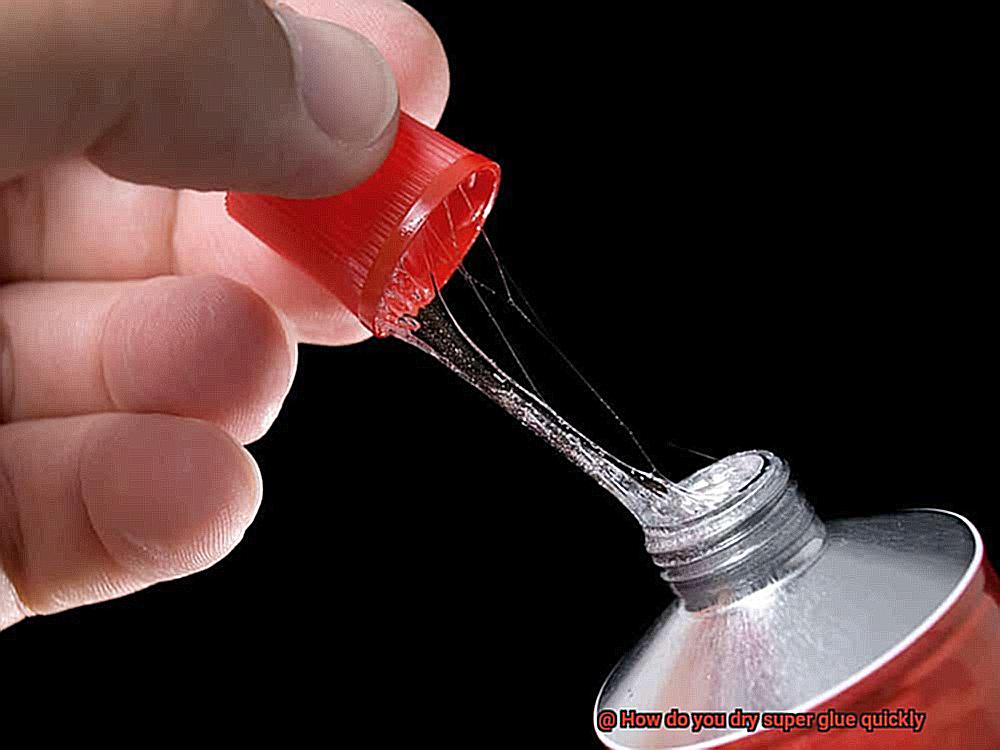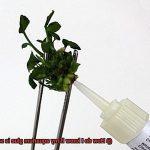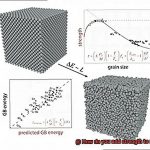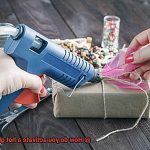You’ve just applied that trusty tube of super glue to fix or create something amazing, but now you’re stuck wondering how on earth you can make it dry faster. Well, fear not. You’re not alone in this sticky situation, and today, we’re here to spill the beans on some top-secret techniques for turbo-charging the drying process of super glue.
In this blog post, we’ll unveil a handful of lightning-fast methods to help you dry super glue in no time at all. From harnessing the power of natural heat sources to whipping up your own homemade accelerators, we’ve got your back (and your bond) with these mind-blowing tricks. So buckle up, folks, and get ready to explore the thrilling world of rapid super glue drying.
What is Super Glue?
Contents
- 1 What is Super Glue?
- 2 Using Acetone to Dry Super Glue Quickly
- 3 Using Heat to Dry Super Glue Quickly
- 4 Applying Pressure to Dry Super Glue Quickly
- 5 Using a Cyanoacrylate Accelerator to Dry Super Glue Quickly
- 6 Keeping the Item in a Well-Ventilated Area to Dry Super Glue Quickly
- 7 Tips and Tricks for Drying Super Glue Quickly
- 8 Potential Hazards of Drying Super Glue Too Quickly
- 9 Conclusion
Are you tired of broken items lying around the house, waiting to be fixed? Look no further than the incredible adhesive power of super glue. In this guide, we will explore what super glue is, how it works, and its various uses. Get ready to become a master of repairs and creative projects with the help of this versatile adhesive.
Super glue, also known as cyanoacrylate adhesive, is a fast-acting adhesive that forms strong bonds in seconds. It was initially developed during World War II for creating clear plastic gun sights, but it wasn’t until the 1950s that it became commercially available. Today, it is used in various industries and households worldwide.
When exposed to moisture, either from the air or the surfaces being bonded, the cyanoacrylate molecules in super glue undergo a chemical reaction. This reaction causes them to form strong bonds rapidly, allowing the glue to dry within seconds or minutes. The result is a durable and long-lasting bond.
Super glue has a wide range of uses and applications:
- Repairing broken items: From fixing ceramic dishes to mending plastic toys, super glue is your go-to adhesive for quick and reliable repairs.
- Crafting projects: Whether you’re creating jewelry, assembling models, or designing handmade cards, super glue provides a strong bond for various materials like wood, metal, and fabric.
- Medical applications: Surprisingly, super glue is even used in certain medical settings. It can be used to close minor cuts and wounds quickly and effectively under medical supervision.
Tips for Quick Drying:
- Use acetone or nail polish remover: Apply a small amount to the glued area using a cotton swab or cloth to break down the bonds and speed up drying.
- Apply heat: Use a hairdryer on a low or medium setting to provide heat, which helps the glue dry faster. Be sure to hold it at a safe distance to avoid any damage.
- Apply pressure: After applying the glue, firmly press the surfaces together and hold them in place for a few minutes to enhance the bond and expedite drying.
- Use a cyanoacrylate accelerator: These specially formulated products speed up the drying time of super glue. Apply a small amount to one of the surfaces before gluing.
- Ensure good airflow: Keep the glued item in a well-ventilated area to facilitate the evaporation of moisture and promote faster drying.
Using Acetone to Dry Super Glue Quickly
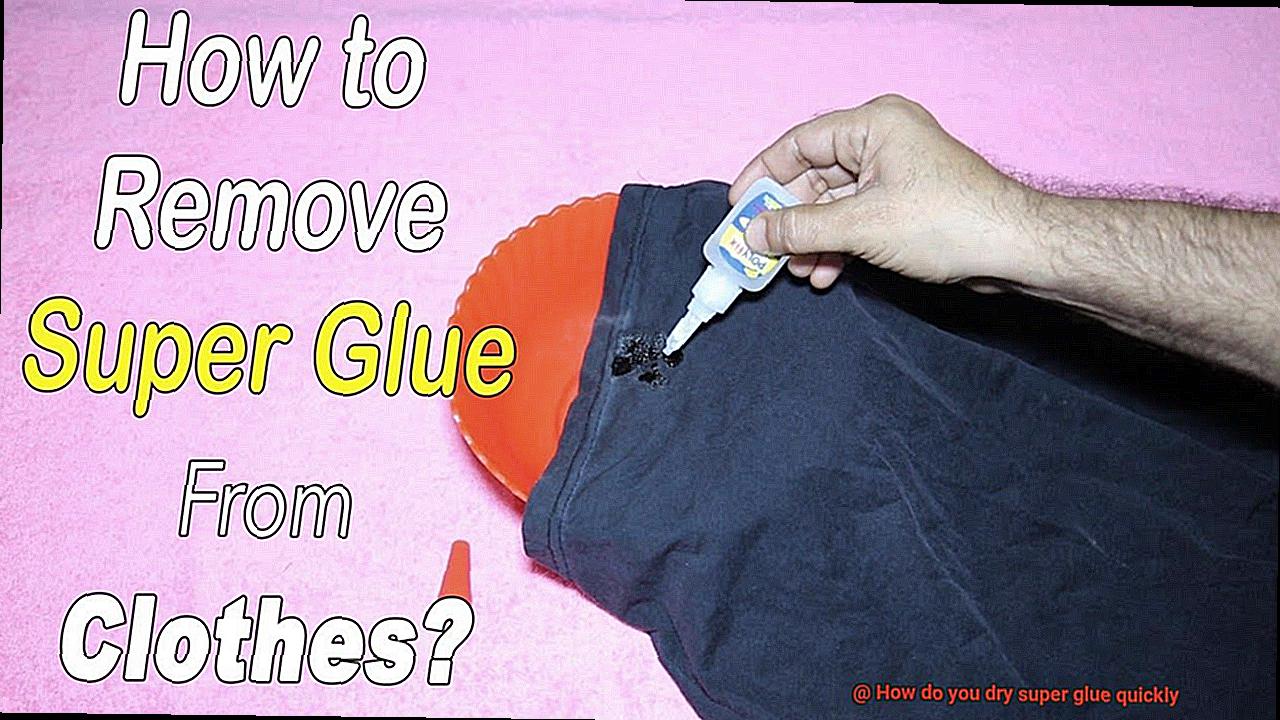
Super glue is an essential tool for repairs and crafting projects, but waiting for it to dry can be frustrating. Luckily, there’s a secret weapon that can expedite the drying process: acetone. In this article, we’ll explore the magic of acetone and provide a step-by-step guide on how to use it effectively to dry super glue in a jiffy.
Why Acetone?
Acetone, a clear and volatile liquid commonly found in nail polish removers, is an excellent solvent that can break down the adhesive properties of super glue. When acetone comes into contact with super glue, it initiates a chemical reaction that accelerates the drying process.
The Step-by-Step Guide:
- GSafety first: Ensure you are in a well-ventilated area to avoid inhaling strong fumes.
- Gather your supplies: Grab a clean cloth or cotton swab and a small amount of acetone.
- Dampen the cloth or swab: Dip it into the acetone, ensuring it is damp but not dripping.
- Gently dab the super glue: Apply the acetone-laden cloth or swab onto the glued area, avoiding rubbing or scrubbing to prevent damage.
- Let it sit: Allow the acetone to work its magic for a few seconds, breaking down the adhesive properties of the super glue.
- Wipe away softened glue: After a few seconds, gently wipe away the softened glue using the cloth or swab. Be cautious not to press too hard, as this may spread the glue further.
- Repeat if necessary: If any traces of super glue remain, repeat the process until all visible residues are removed.
- Air dry: Once you have achieved a clean surface, allow it to air dry completely before using or touching the repaired item again.
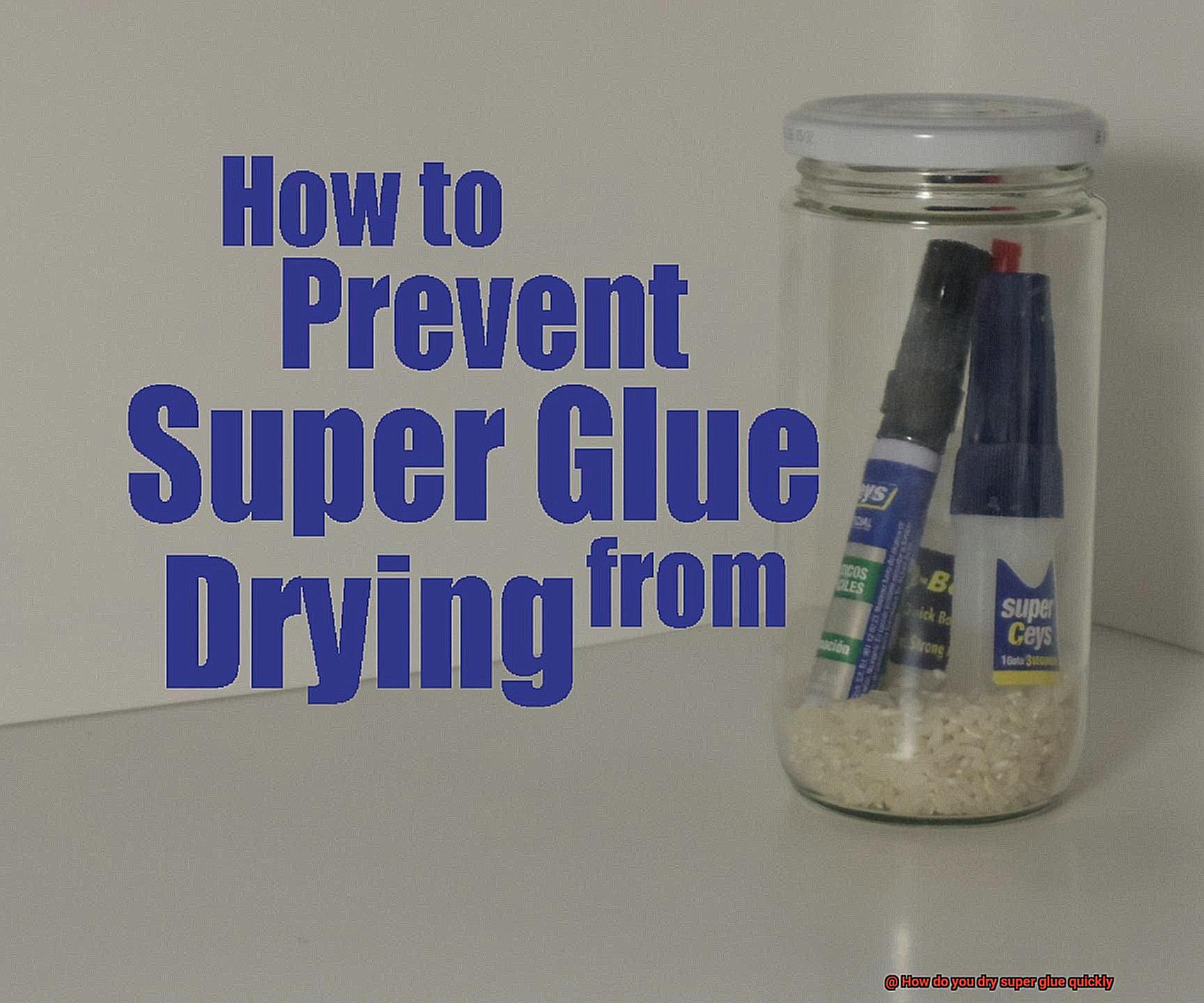
Additional Tips:
- For larger surfaces, consider using a soft-bristle brush to apply acetone.
- Exercise caution when using acetone on sensitive materials such as plastics or painted surfaces, as it may cause damage.
- In case of accidental skin contact with acetone, wash the area immediately with soap and water.
Using Heat to Dry Super Glue Quickly
Today, we delve into the intriguing topic of using heat to rapidly dry super glue. Buckle up and grab your glue guns as we embark on this blazing adhesive adventure.
Let’s kick things off by exploring the science behind it all. When exposed to heat, the molecules within the super glue become energized and hyperactive. This heightened activity allows the glue to bond at an accelerated pace, effectively minimizing your waiting time.
Now that we understand the “why,” let’s dive into the “how.” One simple method for harnessing the power of heat is by wielding a trusty hairdryer. Just aim that stream of hot air towards the glued area, and behold. The heat aids in evaporating the moisture within the glue, drastically expediting the drying process. However, exercise caution and keep your hairdryer on a low or medium setting to prevent any potential damage or unsightly bubbles.
But wait – there’s more. If a hairdryer isn’t within reach, fret not. You can also bask your glued object in direct sunlight or position it near a reliable heat source like a radiator. The gentle warmth emitted from these sources will work their magic, hastening the evaporation of moisture within the glue.
Before you rush off to heat everything in sight, it’s crucial to consider a few factors. Not all materials can withstand high temperatures without suffering damage. Hence, it’s wise to conduct a small inconspicuous area test first. We wouldn’t want any melted masterpieces on our hands.
Safety should always be paramount when experimenting with heat. Excessive heat can cause super glue to emit toxic fumes, so ensure you’re working in a well-ventilated area. Passing out from an overwhelming bonding experience is certainly not the goal here.
For larger or thicker applications of super glue, a heat gun or mini blowtorch might be your holy grail. These tools offer concentrated heat and can revolutionize your larger projects. Nevertheless, exercise caution and adhere to safety guidelines diligently.
Sometimes, heat alone may not suffice. When you’re truly in a hurry, consider combining heat with other techniques such as light pressure application or employing accelerators specifically designed for super glue. It’s like witnessing a power couple in action – an unstoppable force for rapid drying.
Applying Pressure to Dry Super Glue Quickly
When you find yourself in a sticky situation and need to dry super glue quickly, applying pressure is the secret ingredient that will save the day. With a few simple techniques, you can ensure a speedy and secure bond that will have your project ready in no time.
Let’s start with the basics: using your trusty fingers or tools to apply pressure. Firmly press the glued surfaces together, distributing the pressure evenly across the entire area. This method works wonders for small or delicate objects that require precise bonding. It’s like giving them a reassuring squeeze.
But what if you’re dealing with larger surfaces or objects? It’s time to bring out the heavy artillery – clamps or vices. These nifty tools provide consistent and uniform pressure, ensuring a strong bond and quick drying. Just make sure to choose clamps that are suitable for the size and shape of your project. And don’t forget to protect your surfaces with a soft material like rubber or foam to prevent any unwanted marks or damage.
Now, what if you don’t have clamps on hand? Fear not. Raid your house for those hefty objects lying around – weights. Yes, those paperweights, books, or even cans of soup can come to the rescue. Simply place them on top of the glued surfaces to create enough pressure for quick drying. Just be mindful of any potential damage they might cause and protect your work surface with a cloth or plastic sheet.
Remember, while applying pressure speeds up drying, it doesn’t eliminate the need for curing time. So be patient and give your glued objects at least 24 hours before subjecting them to stress or load. This will ensure a strong and durable bond that can withstand whatever challenges come their way.
Using a Cyanoacrylate Accelerator to Dry Super Glue Quickly
Well, I have just the solution for you – a cyanoacrylate accelerator.
A cyanoacrylate accelerator is like something out of a sci-fi movie, but trust me, it’s real and it’s a game-changer. It’s a product specifically designed to speed up the drying time of super glue. How does it work? By promoting the polymerization process of the glue, turning liquid adhesive into a solid bond.
Using this magical elixir is simple. First, make sure your glued surfaces are clean, dry, and free from any grease or oil. Any contaminants can interfere with the effectiveness of the accelerator. Once that’s covered, grab your trusty cyanoacrylate accelerator spray bottle and hold it about 6 to 8 inches away from the glued surfaces. Now, give it a light mist. Remember, a little goes a long way, so resist the urge to go overboard.
As soon as you apply the accelerator, something amazing happens – the super glue starts to dry almost instantly. It’s like watching magic unfold before your eyes. However, don’t get too carried away just yet. While the accelerator speeds up the drying process significantly, it’s still a good idea to let it sit undisturbed for a few minutes to ensure complete curing.
Now, I must mention that cyanoacrylate accelerators may not be suitable for all types of super glue applications. Some specialized formulations or specific bonding requirements may not be compatible with accelerators. Additionally, using an accelerator can sometimes result in a weaker bond compared to allowing the super glue to dry naturally. So, consider the needs of your project and consult the manufacturer’s recommendations before reaching for that accelerator.
But when used correctly, a cyanoacrylate accelerator can be a real lifesaver. It’s particularly handy when dealing with porous or absorbent materials that slow down super glue’s drying time. The accelerator gives them an extra boost in the curing process, ensuring a quick and strong bond.
Keeping the Item in a Well-Ventilated Area to Dry Super Glue Quickly
We’ve all been there, anxiously holding two pieces together and hoping that the bond sets quickly. Well, I’ve got a solution for you – keeping the item in a well-ventilated area. It may sound simple, but trust me, it’s an effective method to dry super glue quickly.
Ventilation plays a crucial role in expediting the drying process of super glue. By providing increased airflow and decreased humidity, a well-ventilated area helps evaporate the solvent in the glue more rapidly, resulting in a strong bond.
Let’s dive into the details of how ventilation helps speed up the drying process:
- Increased airflow: When you place the glued item in a well-ventilated area, fresh air circulates around it. This increased airflow accelerates the evaporation of the solvent present in the glue. As the solvent evaporates, the glue hardens and solidifies, creating a strong and durable bond.
- Decreased humidity: Humidity can slow down the drying process of super glue. By keeping the item in a well-ventilated area, you reduce the moisture in the air surrounding the glue. This decrease in humidity allows the glue to dry faster, saving you precious time.
Now that you understand why ventilation is crucial for drying super glue quickly, let’s explore some practical tips:
- Open windows and good air circulation: Place the glued item near an open window or in a room with good air circulation. This allows fresh air to flow around the glue, expediting the drying process.
- Fan or hairdryer: If you want to speed things up even more, use a fan or a hairdryer set on a cool or low heat setting. The airflow generated by these devices blows directly onto the glued area, promoting evaporation and quickening the bonding process.
It is important to note that while ventilation is an excellent method for drying super glue quickly, it may not be suitable for all projects. Delicate or porous materials like fabric or paper can be susceptible to wrinkling or distortion with excessive airflow. In such cases, alternative methods like using a curing agent or applying pressure with a weight might be more appropriate.
Lastly, it’s essential to prioritize safety when working with super glue. The glue emits fumes during the drying process, which can be irritating to the eyes, nose, and throat. That’s why it’s crucial to work in a well-ventilated area and consider wearing protective gear like goggles and a mask if necessary.
Tips and Tricks for Drying Super Glue Quickly
We’ve got some sensational tips and tricks that will have your super glue drying in record time. Whether you’re an arts and crafts aficionado or a DIY enthusiast, these methods will have you bonding like a pro in no time. So, let’s dive right into the world of quick-drying super glue.
Spray It and Dry It:
Prepare to be amazed by the power of accelerators or activators designed solely for super glue. These magical products come in spray or brush-on forms and work wonders by turbocharging the curing process. Simply apply the accelerator to the glued area, and like magic, the glue dries almost instantaneously, leaving you with a firm bond that’s ready to conquer any project.
Hairdryer Magic:
Behold, the humble hairdryer can transform into a drying superhero. Set it to a low heat setting, aim it a few inches away from the glued area, and witness its transformative powers. The gentle breeze of warm air dances over the glue, causing the moisture within to evaporate rapidly. The result? Super glue that dries in a flash, allowing you to move forward with your creative endeavors without delay.
Press It for Success:
Time to unleash the power of pressure. After applying the glue, firmly press the surfaces together and hold them in place for a few minutes. This simple act not only creates a strong bond but also squeezes out any excess moisture lurking within. With this trick up your sleeve, you’ll be ready to conquer your projects in no time, leaving no room for drying woes.
Sunshine Love:
Nature herself lends a hand in the quest for speedy super glue drying. Place your glued item under direct sunlight or bathe it in the glow of a UV lamp. The powerful UV rays interact with the glue’s chemicals, setting off a reaction that accelerates the curing process. But beware, my friends, for too much sun can weaken the bond, so use this method judiciously, harnessing its power for optimal results.
Baking Soda or Cornstarch Absorption:
Prepare to witness the magic of household ingredients. Reach for that trusty box of baking soda or cornstarch and sprinkle a little over the glued area. Gently tap off the excess, and watch as these powders work their absorbing wonders. They eagerly soak up moisture from the glue, hastening its drying time. It’s like having a little drying fairy sprinkling her enchanting dust over your project.
Fresh Air Flow:
Last but certainly not least, make sure you’re working in a well-ventilated area. Super glue releases fumes during the drying process, and no one wants to be overwhelmed by those potent odors. Open those windows wide, switch on a fan, or let the breeze from an open door whisk away those fumes. By circulating fresh air, you’ll prevent any fume buildup and promote quicker drying times.
Potential Hazards of Drying Super Glue Too Quickly
Waiting for super glue to dry can be a test of patience, especially when we’re eager to see our projects come to life. However, it’s essential to understand the potential hazards that come with drying super glue too quickly. Before you reach for an accelerator or apply heat, let’s delve into the risks involved. Trust me, it’s better to take it slow and ensure safety.
Toxic Fumes and Vapors:
Did you know that super glue contains a chemical known as cyanoacrylate? When exposed to high temperatures or rapid drying methods, this compound releases toxic fumes and vapors. Inhaling these substances can irritate your respiratory system, leading to coughing, wheezing, and breathing difficulties. Over time, prolonged exposure may even result in asthma or bronchitis. Take a deep breath (but not around super glue fumes.) and allow it to dry naturally.
Skin Burns and Injuries:
Accelerating the drying process with accelerators or heat sources poses a significant risk to your skin. When super glue encounters moisture, it hardens rapidly and generates heat. Imagine the pain of experiencing burns or injuries on your skin due to this reaction. To avoid sticky situations, exercise caution when handling super glue and keep it away from your precious skin.
Compromised Bonding Strength:
Patience is key when it comes to achieving strong bonds. Super glue requires sufficient time to cure and form a durable bond. Drying it too quickly can result in weak bonds that break or detach easily over time. Resist the urge to rush the process and allow your glue the time it needs to work its magic.
Messy Applications and Uneven Distribution:
We’ve all witnessed those unsightly lumpy messes caused by haphazardly applying super glue. Drying it too quickly leads to messy applications, uneven distribution, and an imperfect finish. Let’s be honest, nobody wants a lumpy mess. Take your time, apply the glue carefully, and allow it to dry naturally for that flawless bond.
3oQMFWFbOw8″ >
Also Read: How To Make Super Glue Dry Faster
Conclusion
Drying super glue quickly can be a lifesaver when you’re in a hurry.
Luckily, there are several methods you can try to speed up the drying process. One option is to use compressed air or a fan to blow air onto the glued area.
The circulation of air helps to evaporate the moisture in the glue, allowing it to dry faster. Another technique is to apply heat using a hairdryer on low or medium heat setting.
The warmth helps accelerate the curing process of the glue, making it dry more rapidly. Additionally, you can try using acetone or nail polish remover to dissolve any excess glue and aid in drying.
Lastly, if time permits, you can simply leave the glued object undisturbed for a few hours or overnight to allow the glue ample time to dry naturally.

